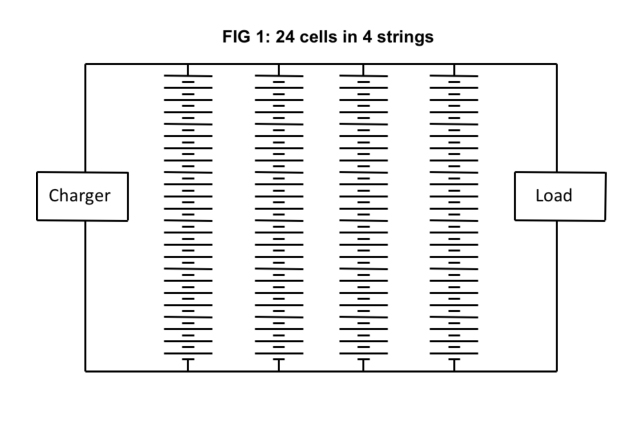
Generally we talk about series connected cells or monoblocs and single or parallel connected strings. For example, a modern telecommunication battery system may have 24 lead-acid cells connected in series and 4 strings connected in parallel. This configuration is illustrated in Fig 1 below.

Continue Reading...

It is well known that all lead-acid batteries will have a shorter life when operated at a higher temperature. This is the case no matter what type lead-acid battery it is and no matter who manufacturers them. The effect can be described as the ARRHENIUS EQUATION.
Svante Arrhenius, was a Swedish scientist who discovered the life of lead-acid batteries is affected by variations in temperature. He established that for every 10ºC increase in temperature the battery life would be halved. Therefore, as an example, it follows that if the life is 30 years at 15ºC then at 25ºC the life will be 15 years. The equation also suggests that at 5ºC the life will be 60 years but unfortunately other things come into play when batteries are very old, typically over 30 years, and the Arrhenius equation is only really valid between about 15ºC and 40ºC for operational batteries.
Continue Reading...

Finding the correct battery size for your requirement can prove difficult, with terminology appearing somewhat confusing. Most lead acid batteries are manufactured to 2V, 6V or 12V, however the 'Ah' rating can be greatly varied. So what does ‘Ah' mean and how does this affect your choice? What other details should be taken into consideration?
‘Ah’ is an abbreviation of ‘Ampere Hour’, though sometimes you may also see ‘Amp Hour’ used, and is a standard unit of electric charge, equal to the charge transferred by a constant current of one ampere flowing for one hour. Looking at lead acid batteries the voltage and Ah is generally described on the battery itself, for example the Yuasa NP7-12 is described as 12V 7Ah. In this instance the 7Ah is given as the 20 hour rate, this tells us that at a constant discharge over 20 hours the battery will produce 0.35 amp per hour (20 hours x 0.35 = 7Ah).
Continue Reading...

Front terminal batteries have been in existence for quite some time now, originally designed for use in telecom cabinets the accessible design of these battery types has now been embraced by manufacturers and installers for use in many other standby power applications such as UPS and emergency lighting. This is due to the advantages given by utilising this type of solution, the benefits being hard to ignore.
The following is a breakdown of some of the features of front terminal batteries, together with how this option can often prove to be practical and cost saving over the life of the battery system.
Continue Reading...

Blue Box Batteries are a specialist provider of battery power solutions for a host of commercial and domestic applications.
The Blue Box Batteries team have firmly positioned themselves as a trusted, established, and leading provider in the British battery market. The business’ head office is located in Hammerley Enterprise Park, Burnetts Lane, Eastleigh.
Continue Reading...

The battery really is an amazing invention. It’s only when you stop to think about the power of these devices that you realise how much easier and more efficient they have made our lives.
Larger batteries have the capabilities to power emergency lighting systems, mobility scooters, motorbikes and even entire buildings too.
Continue Reading...






